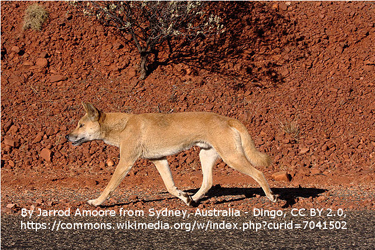Identification of the genomic regions under selection during dog domestication is extremely challenging because the demographic fluctuations associated with domestication can produce signals in polymorphism data that mimic those imposed by selective sweeps. Here authors perform the first analysis of selection on the dog lineage that explicitly incorporates a demographic model, that by controlling for the rate of false discovery, more robustly identifies targets of selection. To do so, a selection scan was conducted using three wolf genomes representing the putative centers of dog domestication, two basal dog breeds (Basenji and Dingo), and a golden jackal as outgroup, for which a demographic model was previously inferred. It was found that our demographically informed analyses filters out many signals that would be otherwise classified as putative selection signals under an empirical outlier approach. Sixty-eight regions of the genome were identified that have likely experienced positive selection. Besides identifying a number of new neurobehavioral candidate genes, the candidate regions contain genes related to lipid metabolism, including CCRN4L, which is centered in the 3rd ranked region. This suggests a previously unreported locus of dietary adaptation, potentially due to the change in diet composition as hunting efficiency increased when proto dogs began hunting alongside hunter-gatherers. informacion[at]ebd.csic.es: Freedman et al (2016) Demographically-based evaluation of genomic regions under selection in domestic dogs. PLoS Genet 12(3): e1005851. DOI:10.1371/journal.pgen.1005851
http://journals.plos.org/plosgenetics/article?id=info:doi/10.1371/journal.pgen.1005851

